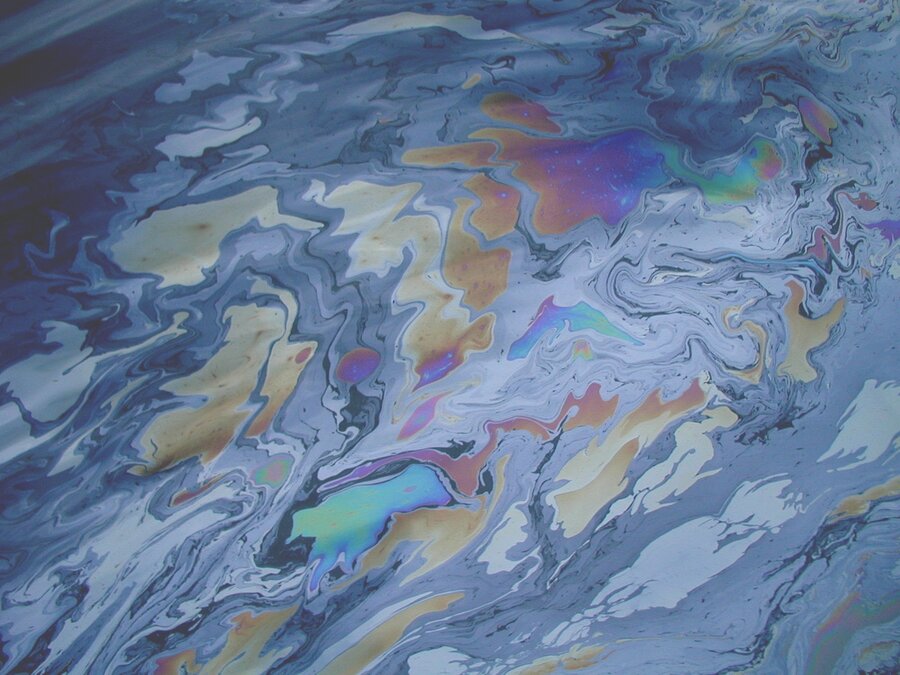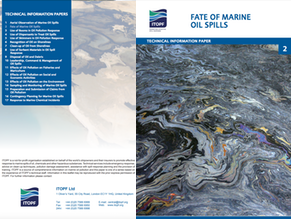Fate of Oil Spills

When oil is spilled at sea it normally spreads out and moves on the sea surface with wind and current while undergoing a number of chemical and physical changes. These processes are collectively termed weathering and determine the fate of the oil.
Some of these processes, like natural dispersion of the oil into the water, lead to the removal of the oil from the sea surface, and facilitate its natural breakdown in the marine environment. Others, particularly the formation of water-in-oil emulsions, cause the oil to become more persistent, and remain at sea or on the shoreline for prolonged periods of time.
The speed and relative importance of the processes depend on factors such as the quantity spilled, the oil’s initial physical and chemical characteristics, weather and sea conditions and whether the oil remains at sea or is washed ashore.
Ultimately, the marine environment usually eliminates spilled oil through the long-term process of biodegradation.
A number of models are available for predicting the trajectory and weathering of oil spills at sea. These can serve as a useful guide to understanding how a particular oil is likely to behave and help in assessing the scale of the impact which a spill might cause.
Oil and its Properties
Crude oil is made up of a wide range of hydrocarbons ranging from very volatile, light materials such as propane and benzene to more complex heavy compounds such as bitumens, asphaltenes, resins and waxes.
Refined products such as gasoline or diesel are composed of smaller and more specific ranges of these hydrocarbons.
The main properties which affect the fate of spilled oil at sea are:
- specific gravity (its density relative to pure water - often expressed as ° API* or API gravity. Oil can be classified into four groups according to their API.
- distillation characteristics (its volatility)
- viscosity (its resistance to flow)
- pour point (the temperature below which it will not flow).
In addition, the wax and asphaltene content influence the likelihood that the oil will mix with water to form a water-in-oil emulsion. Oils which form stable water-in-oil emulsions persist longer on the water surface.
Persistence of Oil

When considering the fate of spilled oil at sea, a distinction is frequently made between persistent oils and non-persistent oils.
As a rule, persistent oils break up and dissipate more slowly in the marine environment and usually require a clean-up operation. Persistent oils typically include crude oils, fuel oils, lubricating oils and heavier grades of marine diesel oil. These oils pose a potential threat to natural resources when released, in terms of impacts to wildlife, smothering of habitats and oiling of amenity beaches.
In contrast, non-persistent oils will dissipate rapidly through evaporation. As a result, spills of these oils rarely require an active response. Non-persistent oils include gasoline, light diesel oil and kerosene.
Impacts from non-persistent oils may include effects on paint coatings in marinas and harbours and, at high concentrations, acute toxicity to marine organisms.
Persistence is also important when it comes to the international compensation regimes and the International Oil Pollution Compensation Funds (IOPC Funds) have developed guidelines, widely accepted, which define the term "persistent oil". Under these guidelines an oil is considered non-persistent if at the time of shipment at least 50% of the hydrocarbon fractions, by volume, distil at a temperature of 340°C (645°F) and at least 95% of the hydrocarbon fractions, by volume, distil at a temperature of 370°C (700°F) when tested in accordance with the American Society for Testing and Materials (ASTM) Method D86/78 or any subsequent revision thereof.
Explore Documents on Fate of Oil Spills
01.기름오염 항공탐색 지침
항공탐색은 해상에서 작업선의 배치와 작업통제, 오염 가능성이 있는 해안선의 시기적절한 보호, 해안방제 자원의 준비를 위한 정보를 제공한다. 이 문서는 효과적인 항공탐색을 수행하기 위한 조언과 지침을 제공한다.
Categories: Fate of Oil Spills, Response Techniques, Planning & operations, Spill Response, Technical Information Paper (TIPS)
02.해상 유출기름의 특성변화
본 기술서는 ‘풍화작용’으로 알려진 유출유에 작용하는 다양한 자연 과정의 복합적인 영향을 기술하고 있다. 유류가 해양환경에서 지속될 것인지를 결정하는 요인들은 방제 작업의 영향과 함께 고려된다. 해양에서 유출유의 거동 특성은 방제의 모든 측면에 중요한 영향을 미치기 때문에, 결과적으로 본 기술서는 ITOPF 방제기술정보집의 다른 부분들과 함께 살펴보아야 한다.
Categories: Fate of Oil Spills, Technical Information Paper (TIPS)


